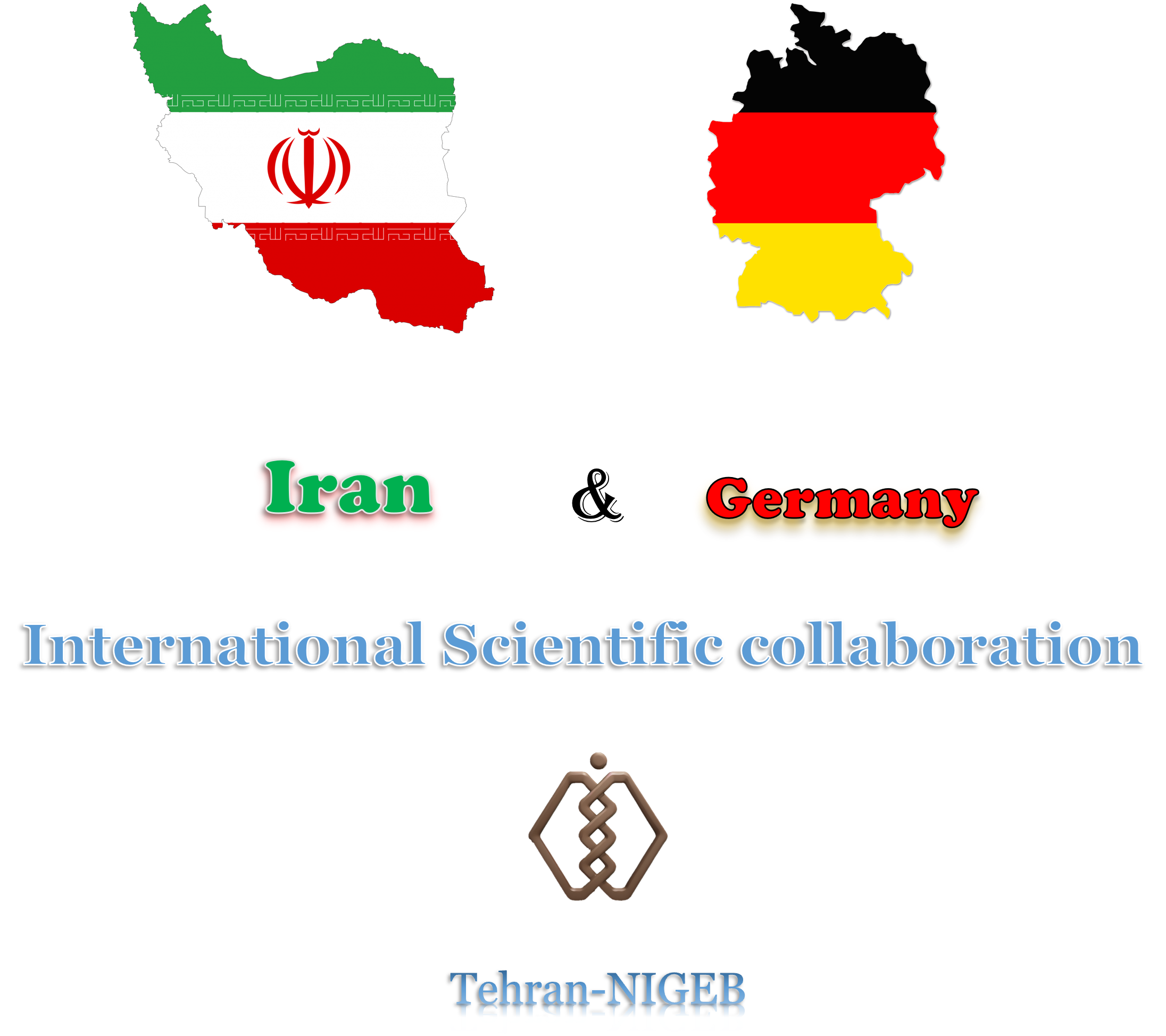Germany - Intl Nigeb Site
Scientific Collaboration between NIGEB and German
Summary of the Scientific Collaboration between NIGEB and German Universities/Institutes
Overview:
The National Institute of Genetic Engineering and Biotechnology (NIGEB) has fostered significant scientific collaborations with several prominent German universities and research institutes. These partnerships have resulted in various research projects and high-impact publications, enhancing knowledge exchange and advancements in biotechnology.
Key Research Projects:
- Helmholtz-Zentrum für Umweltforschung (UFZ):
- Project: Co-immobilization of Tyrosinase and Laccase on Polyacrylamide (2012-2015).
- Outcome: Developed a novel method for immobilizing enzymes on polyacrylamide, retaining their catalytic activity for biotechnological applications.
- Munich Cluster for Systems Neurology:
- Project: Inhibition of Alpha-Synuclein Fibrillation Using Fig and Olive Extracts (2016-2017).
- Outcome: Fig and olive extracts effectively inhibited alpha-synuclein fibrillation, reducing cellular toxicity, relevant for Parkinson's disease treatment.
- Fraunhofer Institute for Molecular Biology and Applied Ecology (IME):
- Project: Production of Biopharmaceuticals in Genetically Modified Roots (2010-2015).
- Outcome: Developed a system for cost-effective, large-scale production of therapeutic proteins in genetically modified plant roots.
- University of Freiburg:
- Project: Interaction between TGFβ and Wnt Signaling Pathways in Differentiation of Stem Cells into Dopaminergic Neurons for Parkinson's Disease Therapy.
- Outcome: Identified potential therapeutic targets for Parkinson's disease by exploring the roles of TGFβ and Wnt signaling in stem cell differentiation.
Research Papers:
- Max Planck Institute for Molecular Biomedicine: Enhancement of Early Embryogenesis Resistance.
- Leibniz Institute of Plant Genetics and Crop Research: Control of Branching and Leaf Pattern in Barley.
- University of Munich (SyNergy Clinical Science Group): Interaction of Alpha-Synuclein Fibrils with Dopamine and Reduction of Its Cellular Toxicity.
- University of Munich (Clinic and Polyclinic for Neurology): Inhibitory Effect of Cuminaldehyde on Alpha-Synuclein Fibrillation and Cellular Toxicity.
Outcomes and Impact:
The collaborations have resulted in:
- The development of new biotechnological methods and systems.
- High-quality research publications.
- Enhanced knowledge exchange and expertise sharing.
Overall Impact:
These partnerships have significantly advanced the field of biotechnology, establishing NIGEB as a leading international research institution through technological innovations and scholarly contributions.
Summary of the Status of Scientific and Academic Cooperation between Iran and Germany
Overview:
The scientific and academic cooperation between Iran and Germany has been growing through various initiatives, agreements, and collaborative projects. These efforts aim to enhance knowledge exchange, technological advancements, and educational opportunities.
Key Elements of Cooperation:
- Memoranda of Understanding and Agreements:
- MoU with German Academic Exchange Service (DAAD) in Tehran (2014): Established a framework for cooperation.
- Agreement (2016): Facilitates sending Iranian doctoral students to 6-9 month courses in Germany.
- Joint Projects:
- Implementation of collaborative research projects between universities and scientific institutions of both countries.
- DAAD’s financial support for short-term research for Iranian students.
- Educational and Exchange Programs:
- Sending Iranian students to Germany for short-term educational and research courses.
- Joint meetings to review and coordinate scientific cooperation.
- Visits and Meetings:
- Strategic meetings and selection committees involving German professors and researchers.
- Visits by Iranian officials to Germany to visit universities and research institutions like DFG and the Max Planck Society.
- Future Programs and Strategies:
- Focus on expanding scientific and technological cooperation.
- Efforts to establish bilateral programs in science and technology.
Specific Examples of Cooperation:
- MoU with DAAD: Framework for cooperation in student and faculty exchanges, research collaboration, and joint degree programs.
- Joint Research Projects: Collaboration in medicine, engineering, and natural sciences, resulting in numerous research papers and new technologies.
- Educational and Exchange Programs: DAAD scholarships for Iranian students to study in Germany, offering access to world-renowned professors and advanced research facilities.
- Visits and Meetings: Regular visits and collaborations between Iranian and German scientists and university officials to build relationships and foster new ideas.
Impact of Cooperation:
- Increased Knowledge and Understanding: Enhanced exchange of ideas and expertise.
- Development of New Technologies: Joint projects leading to new technological advancements.
- Strengthened Ties: Improved relations between Iran and Germany through scientific and educational collaboration.
Future Outlook:
The cooperation between Iran and Germany is expected to continue growing, with a commitment from both countries to expand their collaboration. This partnership is likely to yield further scientific and technological advances and strengthen bilateral ties.

Powered By Liferay
Designed by: Mehdi Nikzad & Kamahldin Haghbeen
Last modification April 2024
Feedback to: intloffice@nigeb.ac.ir

